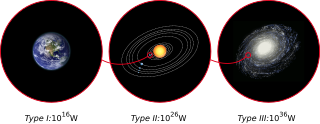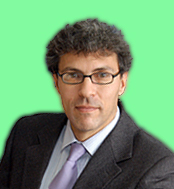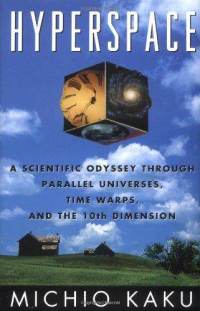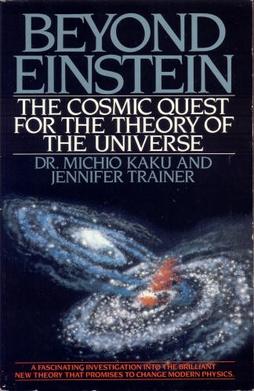
The Kardashev scale is a method of measuring a civilization's level of technological advancement based on the amount of energy it is able to use. The measure was proposed by Soviet astronomer Nikolai Kardashev in 1964 and came to bear his name.
Sliders is an American science fiction and fantasy television series created by Robert K. Weiss and Tracy Tormé. It was broadcast for five seasons between 1995 and 2000. The series follows a group of travelers as they use a wormhole to "slide" between different parallel universes. Tracy Tormé, Robert K. Weiss, Leslie Belzberg, John Landis, David Peckinpah, Bill Dial and Alan Barnette served as executive producers at different times of the production. For its first two seasons, it was produced in Vancouver, British Columbia. It was filmed primarily in Los Angeles, California, in the last three seasons.

Max Erik Tegmark is a Swedish-American physicist, cosmologist and machine learning researcher. He is a professor at the Massachusetts Institute of Technology and the president of the Future of Life Institute. He is also a scientific director at the Foundational Questions Institute and a supporter of the effective altruism movement.

Michio Kaku is an American theoretical physicist, futurist, and popularizer of science. He is a professor of theoretical physics in the City College of New York and CUNY Graduate Center. Kaku is the author of several books about physics and related topics and has made frequent appearances on radio, television, and film. He is also a regular contributor to his own blog, as well as other popular media outlets. For his efforts to bridge science and science fiction, he is a 2021 Sir Arthur Clarke Lifetime Achievement Awardee.

Miguel Alcubierre Moya is a Mexican theoretical physicist. Alcubierre is known for the proposed Alcubierre drive, a speculative warp drive by which a spacecraft could achieve faster-than-light travel.

Hyperspace: A Scientific Odyssey Through Parallel Universes, Time Warps, and the 10th Dimension is a book by Michio Kaku, a theoretical physicist from the City College of New York. It focuses on Kaku's studies of higher dimensions referred to as hyperspace. The recurring theme of the book is that all four forces of the universe become more coherent and their description simpler in higher dimensions.

UFO Files is an American television series that was produced from 2004 to 2007 for The History Channel. The program covers the phenomena of unidentified flying and submerged objects, close encounters with alleged extraterrestrial life, and alleged military and government cover-up conspiracies.
Parallel Universes is a 2001 documentary produced by the BBC's Horizon series. The documentary has to do with parallel universes, string theory, M theory, supergravity, and other theoretical physics concepts. Participants include Michio Kaku, Paul Steinhardt, and other physicists.

Beyond Einstein: The Cosmic Quest for the Theory of the Universe is a book by Michio Kaku, a theoretical physicist from the City College of New York, and Jennifer Trainer Thompson. It focuses on the development of superstring theory, which might become the unified field theory of the strong force, the weak force, electromagnetism and gravity. The book was initially published on February 1, 1987, by Bantam Books.

Parallel Worlds: A Journey Through Creation, Higher Dimensions, and the Future of the Cosmos is a popular science book by Michio Kaku first published in 2004.

Visions of the Future is a 2007 documentary television series aired on the BBC Four television channel. The series stars theoretical physicist and futurist Michio Kaku as he documents cutting edge science.

Physics of the Impossible: A Scientific Exploration Into the World of Phasers, Force Fields, Teleportation, and Time Travel is a book by theoretical physicist Michio Kaku. Kaku uses discussion of speculative technologies to introduce topics of fundamental physics to the reader. The topic of invisibility becomes a discussion on why the speed of light is slower in water than in vacuum, that electromagnetism is similar to ripples in a pond, and Kaku discusses newly developed composite materials. The topic of Star Trek "phasers" becomes a lesson on how lasers work and how laser-based research is conducted. The cover of his book depicts a TARDIS, a device used in the British science fiction television show Doctor Who to travel in space and time, in its disguise as a police box, continuously passing through a time loop. With each discussion of science fiction technology topics he also "explains the hurdles to realizing these science fiction concepts as reality".

Head Rush is a spin-off of the popular MythBusters show airing on Discovery's Science Channel since it debuted in 2010.

Physics of the Future: How Science Will Shape Human Destiny and Our Daily Lives by the Year 2100 is a 2011 book by theoretical physicist Michio Kaku, author of Hyperspace and Physics of the Impossible. In it Kaku speculates about possible future technological development over the next 100 years. He interviews notable scientists about their fields of research and lays out his vision of coming developments in medicine, computing, artificial intelligence, nanotechnology, and energy production. The book was on the New York Times Bestseller List for five weeks.
Stephen Hawking: Master of the Universe is a documentary television series produced by the television broadcaster Channel 4. The subject of the series is British theoretical physicist Stephen Hawking, known for his work on black holes, who is also the presenter of the series. The series includes interviews with astrophysicist Kim Weaver, Bernard Carr, a student of Hawking's, and three theoretical physicists: Michio Kaku, Edward Witten, known for his work on superstring theory, and Lisa Randall. The first episode premiered in 2008, twenty years after the publication of Hawking's bestselling popular science book A Brief History of Time. The title is derived from a Newsweek cover.
Physics outreach encompasses facets of science outreach and physics education, and a variety of activities by schools, research institutes, universities, clubs and institutions such as science museums aimed at broadening the audience for and awareness and understanding of physics. While the general public may sometimes be the focus of such activities, physics outreach often centers on developing and providing resources and making presentations to students, educators in other disciplines, and in some cases researchers within different areas of physics.

Beyond Star Trek: Physics from Alien Invasions to the End of Time is the fourth non-fiction book by the American theoretical physicist Lawrence M. Krauss. The book was initially published on November 7, 1997 by Basic Books and since then has appeared in five foreign editions. In his previous work, The Physics of Star Trek, Lawrence Krauss explained a number of ideas and concepts featured in the series; they may or may not exist in our universe. In this book, Krauss goes farther to discuss the realities of physics when it is applied to components from other sci-fi story lines.

A planetary civilization or global civilization is a civilization of Type I on the Kardashev scale. This type of civilization is likely to be reliant on renewable energy sources such as stellar power, as well as powerful non-renewable sources such as nuclear fusion. A Type I civilization's energy consumption level is roughly equivalent to the solar insolation on Earth (between 1016 and 1017 watts) ─ around 3 orders of magnitude higher than that of contemporary humanity (around 2×1013 as of 2020).
Ady Hershcovitch is a plasma physicist best known for his 1995 invention, the plasma window, which was later patented.. In the plasma window, a plasma separates air from a vacuum by preventing the air from rushing into the vacuum. This scientific development can facilitate non-vacuum ion material modification, manufacturing of superalloys, and high-quality non-vacuum electron-beam welding. The device has been compared to the force field in the Star Trek TV series. He is well known for his work in plasma physics at Brookhaven National Laboratory. He has over 80 publications and 15 patents.














